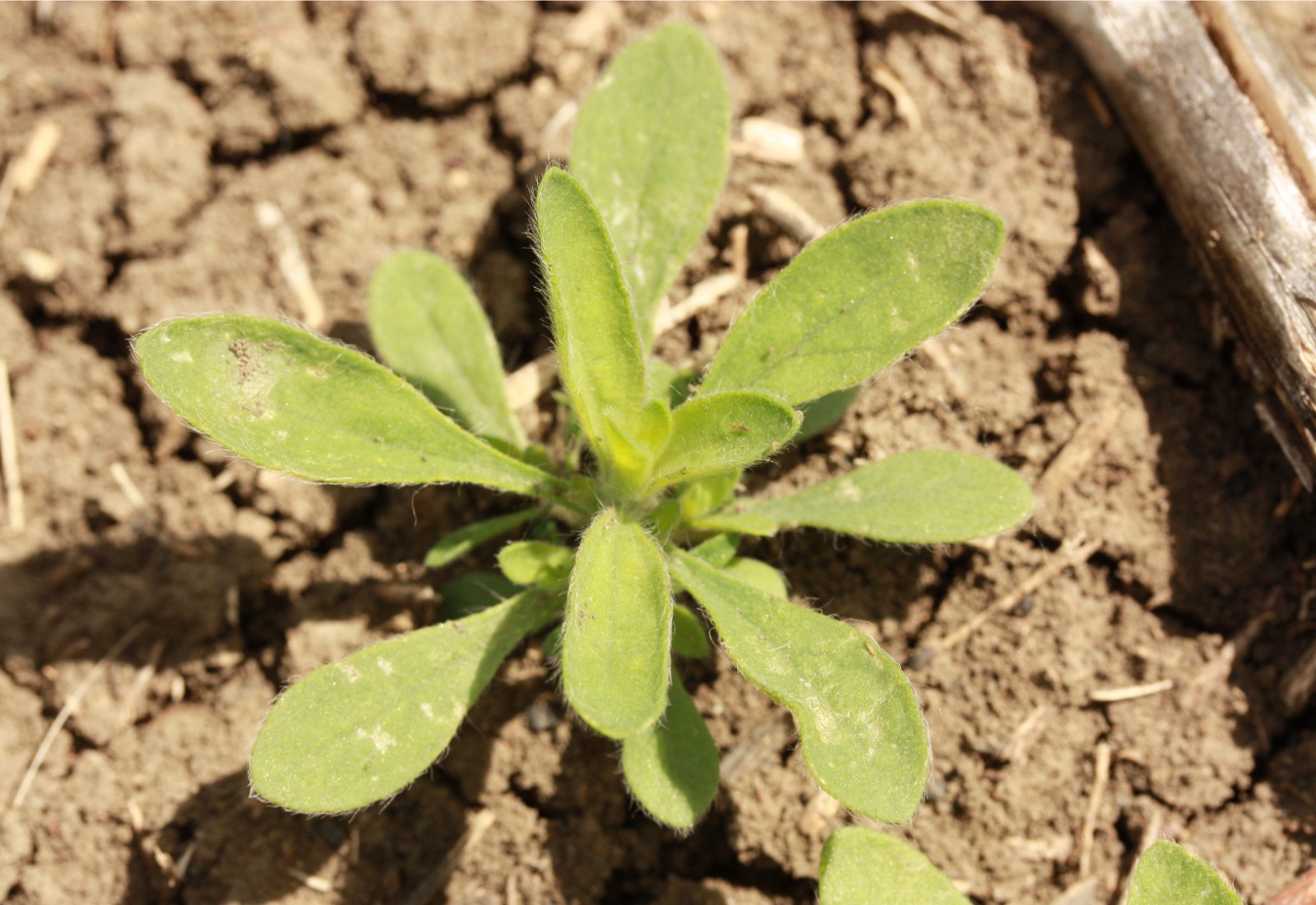Herbicides Critical to “Xtend”ing Life of Soybeans

By Geoff Geddes
You may have been told as a kid to “say it, don’t spray it,” but when it comes to protecting Roundup Ready 2 Xtend® varieties of soybeans, the opposite is true. Applying the right herbicide for the right weed at the right time is critical, and, given the stakes, this is one area where talk is cheap and spraying is priceless.
While there’s no such thing as a “weed-friendly” crop, some plants are more impacted by these unwelcome visitors than others, and soybeans fit squarely in this category. That’s the assertion of Paula Halabicki, technical service specialist in Manitoba with BASF.
“Soybeans are very affected by weed competition,” says Halabicki.
The test of timing
“There’s a critical weed-free period for soybeans when you must control weeds to offset any negative impact on yield.”
That period can vary depending on the research you consult. Currently, the Manitoba Pulse & Soybean Growers are conducting a new study to update the critical weed-free period for Western Canadian soybean growers. Generally speaking, though, the proper time span is considered to be right from emergence until the third trifoliate.
“If you don’t control weeds during that period you can see high yield losses of up to 50 percent, so it’s a crucial time for soybean growers,” says Halabicki.
Preaching tolerance
Just as crops vary in their reaction to weeds, the same can be said for different soybean varieties and their reaction to herbicides that control those weeds.
“There are really three degrees of tolerance when it comes to soybeans,” says Halabicki. “Conventional soybeans have no tolerance to herbicides whereas Roundup Ready® Soybeans and Genuity® Roundup Ready 2 Yield® Soybeans varieties are tolerant to glyphosate. Finally, you have [Roundup Ready 2 Xtend®] soybeans, which show tolerance to both glyphosate and dicamba. That’s significant as it gives you more options to achieve weed control without causing damage to your crop.”
Originally developed in the United States for issues with resistant weed species, Roundup Ready 2 Xtend® is also a good selection for Canadian growers faced with challenges like glyphosate-resistant kochia.
For dicamba itself, there are many alternatives. BASF has been working with the herbicide since the 1960s and continues to improve the formulation (DMA to DGA). Just recently they released a new formulation – with BAPMA salt chain – called Engenia.
Concentration please
“With Engenia we have changed the salt chain and lowered the volatility parameters of dicamba. As an added benefit, Engenia is more highly concentrated than previous formulations. This should facilitate easier handling for growers in that the use rate will be lower than some other options on the market.”
Growers of Roundup Ready 2 Xtend® varieties should note that while they are able to apply both glyphosate and dicamba, the same principle applies here as with many things in life: just because you can do it doesn’t mean you should.
“It’s important to look at other options, as well,” says Halabicki. “You may want to consider a group 2 or group 6 herbicide, such as Viper ADV, that controls weeds like wild mustard and volunteer canola.”
Though it’s tempting to think of dicamba as an easy fix, Halabicki stressed that it’s not as strong on some weeds, such as volunteer canola, where Viper ADV would be a better choice. In the end, it’s a matter of “weighing all the options and choosing the right herbicide for your target weed species.”
Where dicamba is indicated, there are different use rates and patterns.
“Dicamba can be applied pre-emerge or in-crop. Depending on the rate and pattern used, you may see a residual impact on other broadleaf weeds if you apply it at a high rate early in the season. That is a benefit over some of the other products available.”
When all else fails, read the directions
Regardless of the herbicide chosen, careful scrutiny of the label and instructions can save a lot of headaches.
“Be especially mindful of the proper weed stage for application. Weeds are generally easier to control when they’re smaller but you should stick to the right weed and crop stage based on the label; that’s true for any herbicide.”
In light of weed resistance issues, good management techniques are also needed to keep that resistance from expanding. When applying a product, it’s advisable to put a second active ingredient in the tank. For example, dicamba (group 4) and glyphosate (group 9) will have overlapping effects and kochia will be controlled by both.
“Always think about using multiple modes of effective action with overlapping weed spectrums to avoid resistance issues.”
Lastly, with Engenia or other herbicides, emphasize on-target application so as not to spray into excessive wind and be aware of other crops around you.
Whether you plant a Roundup Ready 2 Xtend® variety or another variety, making the right choices in your herbicide application now will pay dividends in the long run. And the next time someone tells you to “say it, don’t spray it,” you can bet the farm that they’re not in the crop business.


